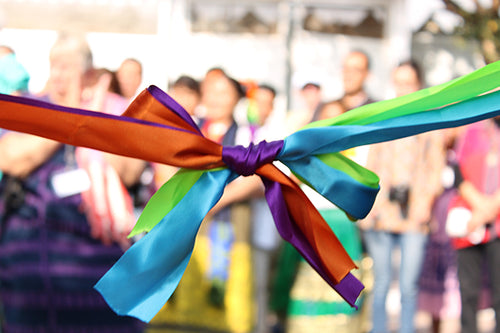
Nicolás Fabián Ferman, Santa Fe de la Laguna, Michoacán.
El hecho de venir de Santa Fe de la Laguna, Michoacán, ya sugiere algo especial. A este pequeño pueblo indígena del lado norte del lago de Pátzcuaro, fundado en el siglo XII, se le suele llamar el hogar de los dioses míticos y el corazón espiritual de la nación purépecha. Santa Fe de la Laguna también es conocida por su cerámica única, que, hasta que Nicolás Fabián Fermín comenzó a cambiar el estilo, originalmente era práctica: principalmente ollas y jarras para cocinar, platos y cuencos pequeños, o candelabros y copaleros para rituales religiosos.
Nicolás nació en 1962 en una familia de alfareros que se especializaba en estos artículos domésticos y ceremoniales comunes. Comenzó a aprender de su tía a la edad de 7 años e incluso en su juventud comenzó a considerar cómo podría crear piezas únicas. Desde su matrimonio con María del Rosario Lucas Bautiste, la pareja ha estado trabajando continuamente en nuevas e interesantes formas de trabajar con formas antiguas. Nicolás dio nueva vida a la antigua práctica de grabar diseños en cerámica y también encontró un método para reemplazar el plomo en sus esmaltes. Usando arcilla extraída en la región, Nicolás y Rosario primero crean su forma, luego pulen la pieza, graban un diseño y luego raspan el espacio negativo que rodea el grabado para dejar el patrón en relieve. El proceso de cocción en madera luego agrega las manchas negras o marrones que completan muchas piezas de arte.
Nicolás recuerda con una sonrisa irónica que al principio la comunidad se burlaba de él, pensando que su trabajo no podía tener éxito. Dijo que fue cuando ganó su primer concurso hace muchos años que la gente del pueblo se unió a su trabajo y finalmente comenzó a usar algunos de sus métodos. Desde entonces, Nicolás ha ganado muchos premios y ha sido dos veces participante patrocinado en el prestigioso Mercado Internacional de Arte Popular de Santa Fe, Nuevo México.
INFORMACIÓN DEL ARTISTA: Nicolás Fabián Fermín
Taller de Alfarería Ahuanda
WhatsApp: 443 392 7723
Correo electrónico: falviciano@gmail.com

